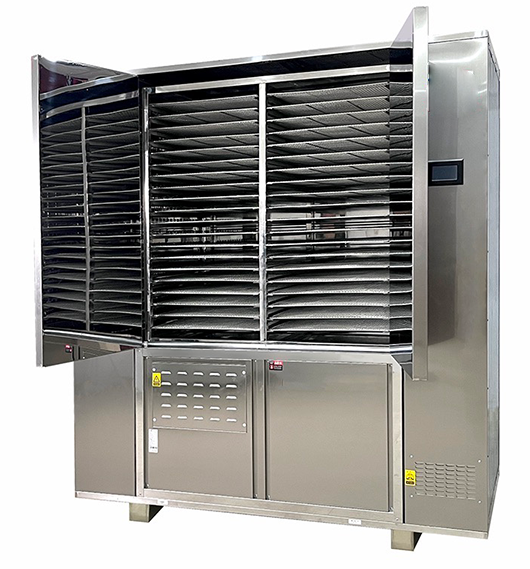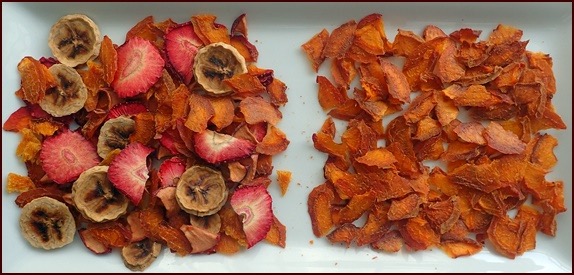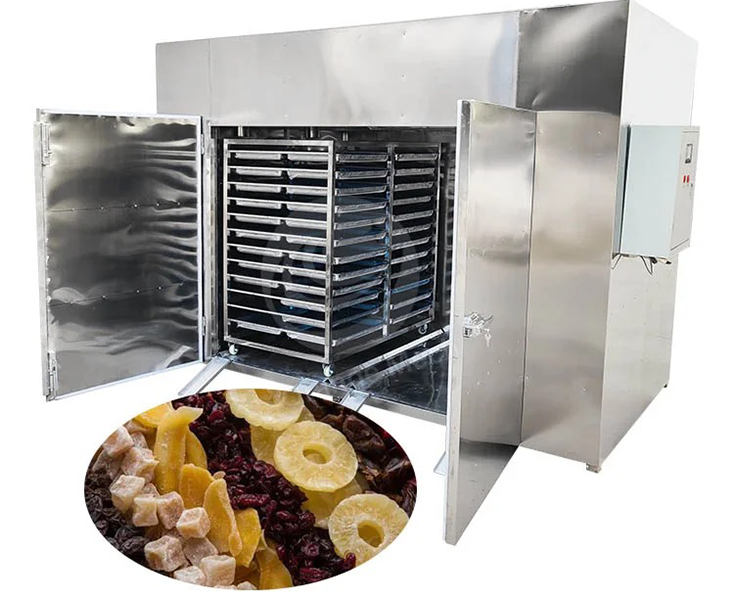
Content Menu
● Understanding the Basics of Food Dehydration
>> The Dehydration Process
● Types of Food Dehydrators
● How Compact Heat Pump Ventless Dryers Work
● Benefits of Using Food Dehydrators
● Applications of Food Dehydration
● Choosing the Right Food Dehydrator
● Common Mistakes When Using Food Dehydrators
● Conclusion
● FAQ
>> 1. What types of foods can be dehydrated?
>> 2. How long does it take to dehydrate food?
>> 3. Can I use my oven instead of a dehydrator?
>> 4. Is it safe to dehydrate meat?
>> 5. How should I store dehydrated foods?
● Citations:
Food dehydrators are essential appliances for preserving food by removing moisture, which helps prevent spoilage and extends shelf life. This article will explore the workings of food dehydrators, including the principles behind their operation, different types available, and their applications in food preservation. We will also touch upon the benefits of using a compact heat pump ventless dryer in food dehydration.

Understanding the Basics of Food Dehydration
Food dehydration is a process that involves removing moisture from food items to inhibit the growth of bacteria, yeasts, and molds. The primary goal is to preserve food while maintaining its nutritional value and flavor.
The Dehydration Process
1. Heating Element: The dehydrator uses a heating element to raise the temperature inside the unit. This heat is crucial as it facilitates the evaporation of moisture from the food.
2. Air Circulation: A fan circulates hot air around the food, ensuring even drying. This circulation helps to remove moist air from the dehydrator while bringing in dry air, creating an optimal environment for dehydration.
3. Humidity Control: Advanced dehydrators may include humidity control features that adjust moisture levels during the drying process, preventing over-drying or insufficient drying.
4. Ventilation: Proper ventilation allows moist air to escape while fresh air enters, ensuring that the drying process is efficient and effective.
Types of Food Dehydrators
There are various types of food dehydrators available on the market, each with its unique features and benefits:
- Stackable Dehydrators: These models consist of several trays stacked on top of one another. They are typically more budget-friendly and suitable for occasional use.
- Vertical or Box Type Dehydrators: These units have a vertical design with a heating element and fan located at the back. They provide more even drying without needing to rotate trays continuously.
- Compact Heat Pump Ventless Dryers: These are specialized dehydrators that use heat pump technology to efficiently remove moisture without venting hot air outside, making them energy-efficient and environmentally friendly.

How Compact Heat Pump Ventless Dryers Work
Compact heat pump ventless dryers utilize a unique technology that sets them apart from traditional dehydrators:
1. Heat Pump Technology: This system extracts heat from the surrounding air and uses it to warm up the dehydrator's interior. The heat pump compresses refrigerant gas, which releases heat when it condenses into a liquid.
2. Moisture Extraction: As hot air circulates around the food, it absorbs moisture, which is then condensed back into liquid form by the heat pump system. This process allows for continuous moisture removal without needing external venting.
3. Energy Efficiency: By recycling heat within the unit, compact heat pump ventless dryers consume less energy compared to conventional dehydrators that require constant heating.
4. Temperature Control: These dryers often come with precise temperature settings, allowing users to tailor the drying process according to different types of food.
5. Quiet Operation: Unlike traditional dehydrators that can be noisy due to their fans and heating elements, compact heat pump ventless dryers operate quietly, making them suitable for home environments where noise might be a concern.
6. Compact Design: Their smaller footprint makes them ideal for kitchens with limited space or for users who want a portable solution for food dehydration.
Benefits of Using Food Dehydrators
Using a food dehydrator offers numerous advantages:
- Extended Shelf Life: Dehydrated foods can last for months or even years when stored properly, making them ideal for long-term storage.
- Nutrient Preservation: Unlike other preservation methods like canning or freezing, dehydration retains most of the nutrients in fruits and vegetables.
- Flavor Enhancement: Drying concentrates flavors, resulting in more intense taste profiles for fruits, herbs, and spices.
- Versatility: Dehydrators can be used for a wide range of foods including fruits, vegetables, meats (like jerky), and even herbs.
- Cost-Effectiveness: By purchasing fresh produce in bulk and dehydrating it at home, consumers can save money compared to buying pre-packaged dried foods from stores.
- Healthy Snack Options: Dehydrated foods make for nutritious snacks without added preservatives or sugars found in many commercial snack products.
Applications of Food Dehydration
Food dehydration is widely used in various sectors:
- Home Use: Many households use dehydrators for making snacks like dried fruit chips or jerky. It allows families to create healthy snacks tailored to their preferences without additives.
- Commercial Production: Food manufacturers dehydrate products for retail sale, providing convenient snacks and ingredients for consumers. This includes everything from dried fruits used in cereals to powdered vegetable mixes for soups.
- Emergency Preparedness: Dried foods are essential in survival kits due to their long shelf life and lightweight nature. They are ideal for camping trips or emergency situations where fresh food may not be available.
- Culinary Arts: Chefs often use dehydrated ingredients to enhance dishes with concentrated flavors or create unique textures. For example, powdered mushrooms can add umami flavor to sauces without adding moisture.
Choosing the Right Food Dehydrator
When selecting a food dehydrator, consider several factors:
- Capacity: Depending on your needs, choose a model that fits your typical batch sizes—whether you're preparing small amounts or large quantities for preservation.
- Temperature Settings: Look for models with adjustable temperature settings so you can customize drying times based on different types of foods.
- Ease of Cleaning: Removable trays and easy-to-clean surfaces can save time after processing batches of food.
- Noise Level: If noise is a concern in your kitchen environment, opt for quieter models like compact heat pump ventless dryers that operate with minimal sound.
- Energy Efficiency Ratings: Consider energy-efficient models that can save on electricity costs over time while still providing effective dehydration results.
Common Mistakes When Using Food Dehydrators
To achieve optimal results with your food dehydrator, avoid these common pitfalls:
- Overloading Trays: Placing too much food on trays can restrict airflow and lead to uneven drying. Always leave space between items for proper air circulation.
- Not Prepping Food Properly: Failing to wash or cut food into uniform sizes can result in inconsistent drying times. Always prepare your ingredients appropriately before starting the dehydration process.
- Ignoring Temperature Guidelines: Each type of food has specific temperature requirements; ignoring these can lead to under-drying or over-drying your products.
- Skipping Storage Best Practices: After dehydration, improper storage can lead to spoilage; always use airtight containers and store in cool, dark places to maintain quality.
Conclusion
In conclusion, food dehydrators play a crucial role in food preservation by efficiently removing moisture while maintaining flavor and nutrients. Compact heat pump ventless dryers represent an innovative approach to dehydration that combines energy efficiency with effective moisture removal. Whether for home use or commercial production, understanding how these machines work can help maximize their benefits in preserving food while providing healthy snack options at home or enhancing culinary creations in professional kitchens.

FAQ
1. What types of foods can be dehydrated?
Most fruits, vegetables, herbs, and meats can be effectively dehydrated. Foods with high fat content should generally be avoided as they do not dehydrate well.
2. How long does it take to dehydrate food?
Dehydration times vary based on the type of food and its moisture content but typically range from a few hours to several days depending on thickness and water content.
3. Can I use my oven instead of a dehydrator?
Yes, you can use an oven on low heat settings as an alternative to a dehydrator; however, it may not be as efficient or effective for large batches due to uneven heating compared to dedicated dehydrators.
4. Is it safe to dehydrate meat?
Yes, as long as proper temperatures are maintained during dehydration (typically above 160°F) to eliminate harmful bacteria; using a meat thermometer is recommended for safety assurance.
5. How should I store dehydrated foods?
Dehydrated foods should be stored in airtight containers in a cool, dark place away from light and moisture sources to maximize shelf life and prevent spoilage from humidity absorption.
Citations:
[1] https://pocketchangegourmet.com/how-does-a-dehydrator-work/
[2] https://septree.com/pages/what-is-the-working-principle-of-food-dryer
[3] https://www.lowes.com/n/buying-guide/best-food-dehydrator-buying-guide
[4] https://www.freepik.com/free-photos-vectors/food-dehydrator
[5] https://www.youtube.com/watch?v=mtDzdYoyeR8
[6] https://www.youtube.com/watch?v=0_IMnnF10Po
[7] https://www.bxdryer.com/news/industry-news/how-food-dehydrator-works-news.html
[8] https://www.youtube.com/watch?v=rR2G5UO-5Ms
[9] https://en.wikipedia.org/wiki/Food_dehydrator
[10] https://www.youtube.com/watch?v=Zl4wTcCPJu0











